ARC readers play an integral role in the success of any book. Their feedback can help authors and publishers refine the final version of the book and identify issues that may impact the reading experience. Engaging with ARC readers can help authors understand their target audience, generate early book buzz and gather feedback to improve the final version.
- ARCs and their significance for authors
- What is the importance of engaging with ARC readers?
- How to identify your target ARC readers?
- How to choose an ARC platform?
- What ARC platforms are there?
- How to craft a compelling ARC request?
- How to handle negative ARC feedback?
- How to prepare the manuscript for ARC readers?
This article delves into the nuances of ARC engagement, outlining strategies for successful interaction with ARC readers. From identifying target ARC readers to crafting compelling requests and leveraging feedback constructively, authors can confidently navigate the ARC landscape. Additionally, this text provides and overview of popular ARC sites. It also explores the intricacies of preparing manuscripts for ARC distribution, emphasising the importance of professional editing services in ensuring a polished and error-free reading experience.
Moreover, read this article to unravel the key takeaways of connecting with ARC readers, empowering authors to foster excitement, gather feedback and cultivate meaningful relationships in the book promotion and publishing world.
ARCs and their significance for authors
An advance reader copy (ARC) is a pre-publication version of a book distributed to select readers before its official release date. ARCs are significant for authors because they allow them to generate early buzz and excitement for their book, gather valuable feedback from readers, and build relationships with reviewers and influencers. Additionally, ARCs can help authors identify strengths and weaknesses in their writing, refine their marketing strategies, and increase the visibility and success of their book upon its official release.
What is the importance of engaging with ARC readers?
Engaging with ARC readers is immensely important for book promotion and gathering feedback. Here is why:
- Early buzz and promotion: ARC readers are often enthusiastic book lovers eager to discover new titles and share their thoughts with others. By engaging with ARC readers before your book’s official release, you can generate early buzz and excitement surrounding your book. Positive word-of-mouth recommendations from ARC readers can increase your book’s visibility and anticipation among potential readers.
- Reviews and ratings: ARC readers can read your book before it is available to the general public. Encouraging ARC readers to leave reviews and ratings on platforms like Goodreads, Amazon, and book blogs can help build credibility and social proof for your book. Positive reviews from ARC readers can influence other readers’ purchasing decisions and increase sales.
- Feedback and improvement: ARC readers provide valuable feedback on various aspects of your book, including plot, characters, pacing, writing style and more. Their insights can help you identify strengths and weaknesses in your writing and storytelling, allowing you to improve before the book is officially published. Constructive criticism from ARC readers can also guide future revisions and enhance the overall quality of your work.
- Building relationships: ARC readers are often avid readers who enjoy interacting with authors and fellow book enthusiasts. By engaging with ARC readers on social media, through email newsletters or at book events, you can build meaningful relationships and cultivate a sense of community around your work. This loyal fan base can serve as ambassadors for your book, spreading the word to their networks and helping you reach new audiences.
How to identify your target ARC readers?
Identifying your target ARC readers involves understanding the demographics, preferences and interests of individuals most likely to enjoy and engage with your book. Here is a step-by-step guide on how to identify your target ARC readers:
Define your ideal reader persona
Start by creating a detailed profile of your ideal reader. Consider age, gender, occupation, interests, hobbies, reading habits and preferred genres. This persona will serve as a reference point for identifying potential ARC readers.
Research similar authors and books
Look for authors and books in your genre with similar target audiences. Analyse their readership demographics, engagement levels, and the types of readers who interact with their content. This can provide valuable insights into your target audience.
Utilise social media and online communities
Join social media platforms, forums and online communities relevant to your genre. Engage in conversations, participate in discussions and observe the interests and preferences of the members. Pay attention to who is actively discussing and recommending books similar to yours.
Survey your existing audience
If you already have a following or email list, consider sending out a survey to gather information about your audience demographics and preferences. Ask questions about their favourite books, genres they enjoy, and why they follow you as an author. This can help refine your understanding of your target ARC readers.
Analyse book sales data
If applicable, analyse sales data from previous books or similar titles in your genre. Look for patterns in demographics, geographical locations, and reader preferences. This data can provide valuable insights into the characteristics of your target ARC readers.
How to choose an ARC platform?
To research ARC platforms effectively, you can follow these steps:
- Identify your goals and budget: Determine what you want to achieve with your ARC distribution and how much you want to invest. Consider factors such as guaranteed reviews, marketing reach and pricing models.
- Compile a list of ARC platforms: Based on the provided information or additional research, create a list of ARC platforms. Consider both large and small platforms and those offering free and paid promotion plans.
- Evaluate platform features and offerings: Review the details provided for each ARC platform, including pricing, guaranteed reviews, number of reviewers, and marketing reach. Pay attention to additional features and benefits each platform offers, such as genre-specific promotions or access to publishing professionals.
- Assess marketing reach and audience engagement: Look for information on each platform’s marketing reach and audience engagement. Consider factors such as the number of active reviewers, subscribers, and followers on social media platforms. Evaluate how effectively each platform can help you reach your target audience.
- Read reviews and testimonials: Look for reviews and testimonials from authors who have used the ARC platforms. Pay attention to their experiences with the platform. This may include the effectiveness of the promotion, quality of reviews received and overall satisfaction with the service.
- Prioritise platforms that align with your needs: Based on your research and evaluation, prioritise ARC platforms that align most closely with your goals, budget and target audience. Consider factors such as pricing, guaranteed reviews, marketing reach, and additional features offered.
What ARC platforms are there?
Here is a concise review of the 29 ARC platforms.
Amazon Prime Reading
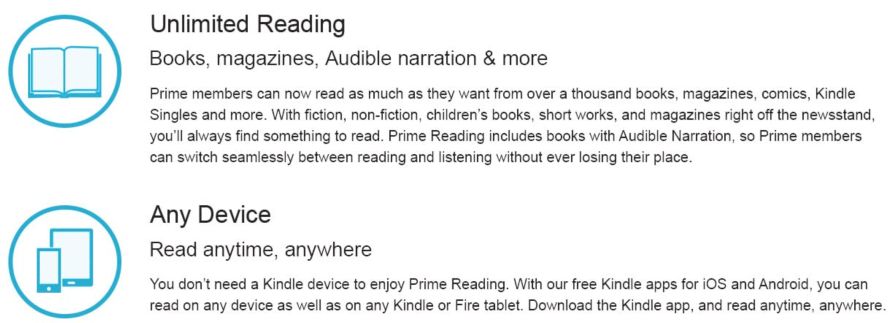
- Free service allowing authors to promote one KDP Select title at a time.
- Extensive marketing reach through Amazon’s 200+ million Prime subscribers.
- No guaranteed reviews or specific stats on book visibility.
BookFunnel
- Tool for secure ARC delivery; pricing tiers from $20 to $250 per year.
- Helps reduce piracy through watermarked files but does not provide a reviewer network.
- Supports group promotions and author swaps to expand reach.
BookishFirst
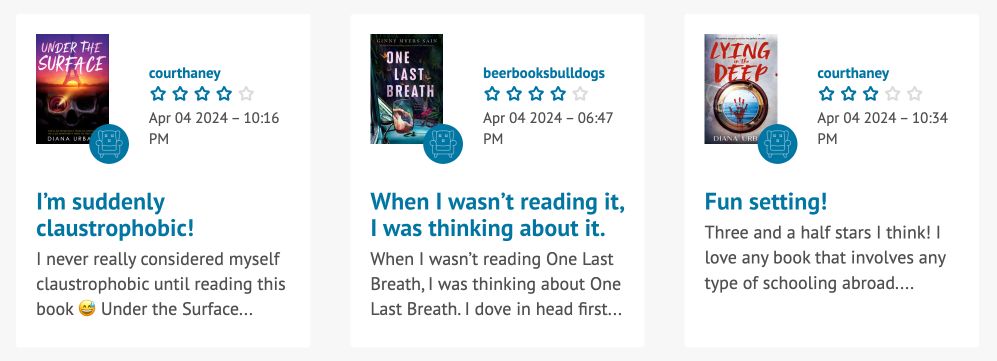
- Offers free advance copies to readers in exchange for feedback and reviews.
- Marketing reach may be challenging to assess, but it has a sizeable Facebook following.
- Suitable for authors seeking engagement with readers through giveaways and mini-reviews.
BookSirens
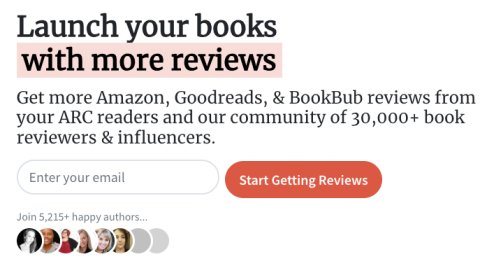
- Connects authors with potential reviewers for a fee or per ARC.
- A large network of reviewers, but reviews are not guaranteed.
- Pricing options cater to authors’ preferences and budget.
Booksprout
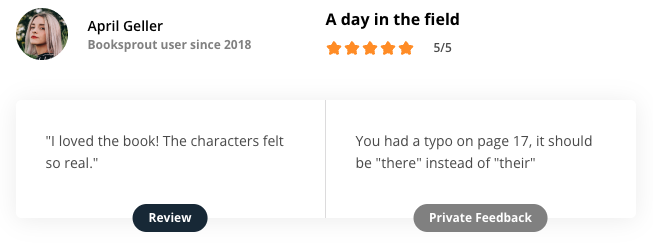
- Provides plans with varying features for authors seeking ARC reviews.
- Impressive reach with a substantial number of active reviewers and positive testimonials.
- Pricing options accommodate authors at different stages of their careers.
BookSweeps

- Organises genre-specific book promotions, including ARC giveaways.
- Charges a participation fee but offers opportunities to reach a broader audience.
- Focuses on lead generation and increasing author discoverability.
BookTasters
- Focuses on Twitter-based reviews, boasting over 80,000 followers and 600 active reviewers.
- Pricing is undisclosed but requires payment for reviews.
- Emphasises creating genuine connections between authors and reviewers.
Edelweiss
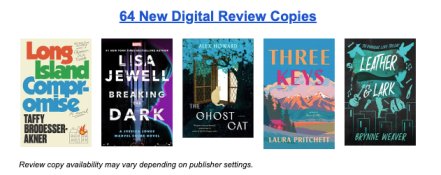
- Predominantly caters to publishers but allows authors to distribute ARCs.
- Offers a significant reach with a large community of reviewers and publishing professionals.
- Requires an annual subscription fee and additional fees per title uploaded.
Goodreads Advanced Copies for Review & Book Giveaways
- Free group with nearly 15,000 members, helping authors connect with reviewers.
- Focus on community engagement through book giveaways and discussions.
- No clear statistics on the number of active reviewers.
Goodreads ARC Of Authors
- Free group for ARC promotions, specifically fiction books, with over 4,000 members.
- No guaranteed reviews or clear marketing reach metrics.
- Focuses on connecting authors with potential reviewers.
Goodreads Authors & Reviewers
- Free group with over 9,000 members; facilitates book promotion and reviews.
- No guaranteed reviews or specific information on reviewer activity.
- Offers various promotional events like featured author programmes.
Goodreads FREE BOOKS for Book Lovers
- Focuses on ARC and manuscript exchanges; over 4,000 members.
- Free to join, but limited information on reviewer activity.
- Helps authors connect with potential reviewers in a casual setting.
Goodreads Making Connections
- Free group with over 14,000 members for ARC exchanges and book promotion.
- Offers author interviews, giveaways, and reviewer connections.
- No guaranteed reviews or clear stats on reviewer engagement.
Goodreads Read 4 Review
- Free platform with over 5,000 members for ARC ebook reviews.
- No guaranteed reviews or details on reviewer impact.
- Focuses on connecting authors and reviewers for review exchanges.
Goodreads Reviewers’ Group
- Free group with over 12,000 members for review exchanges.
- Does not guarantee reviews; unclear information on active reviewers.
- Focuses on building relationships between authors and reviewers.
Hidden Gems ARC Program

- Connects authors with readers willing to review ARCs for a fee.
- Claims a high review success rate but does not disclose specific reviewer numbers.
- Offers pricing based on the number of readers rather than reviewers.
Indie View — Indie Reviewers List

- Provides a list of indie reviewers for authors seeking ARC reviews.
- Free to access, with a community of active reviewers not affiliated with publishers.
- Allows authors to reach out directly to reviewers for ARC reviews.

LibraryThing Early Reviewers
- Offers a free program for authors to provide ARCs in exchange for reviews.
- Boasts a large community of subscribers and recipients of their monthly newsletter.
- Does not guarantee reviews but provides a platform for authors to reach avid readers.
NetGalley
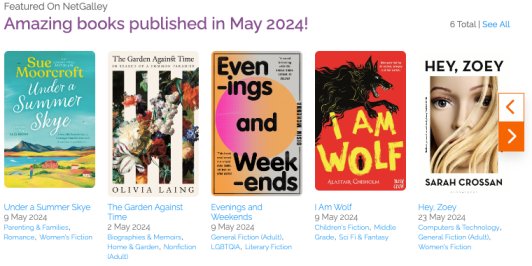
- Provides digital galleys to reviewers, librarians, and publishing professionals.
- Offers extensive reach with thousands of authors, publishers, and reviewers.
- Requires a fee for authors to upload ARCs, with various pricing options available.
Prolific Works
- Offers plans from free to $50 permonth to distribute ARCs and build mailing lists.
- Focuses on giveaways and mailing list growth rather than guaranteed reviews.
- No specific reviewer stats, but strong reader community engagement.
PublishDrive
- Comprehensive self-publishing platform with plans from $9.99 to $99.99 per month.
- Distributes books to over 400 stores and 240,000 libraries worldwide.
- Focuses more on distribution than ARC reviews.
Reading Deals

- Offers discounted and free book promotions, including ARCs.
- Charges a promotion fee but provides access to a substantial reader base.
- Provides options for authors to reach readers through Amazon reviews and social media.
Reedsy Discovery
- Charges $50 per ARC review, but reviews are not guaranteed.
- Book available to 3,000+ reviewers, with featured titles in weekly newsletters.
- Risk of rejection with no refund, but offers editorial feedback.
Rockstar Book Tours
- Specialises in blog tours and social media promotions; pricing from $25 to $200.
- Focuses on young adult, sci-fi and fantasy genres.
- Works with a minimum of 20 bloggers but no guaranteed reviews.
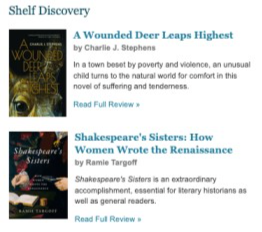
Shelf Awareness
- Sends galleys to industry professionals and subscribers for review consideration.
- Boasts a large subscriber base of engaged book lovers.
- Does not guarantee reviews but provides exposure to a wide audience of readers.
StoryOrigin
- Affordable at $10 per month, offers ARC distribution, review tracking and beta reader management.
- No built-in reviewer network but supports group promotions and newsletter swaps.
- Useful for authors wanting streamlined ARC distribution and follow-up.
TLC Book Tours
- Pricing from $549 to $699 for virtual blog tours with guaranteed reviews.
- Works with 10-15 reviewers per tour, targeting bloggers with substantial followings.
- Focuses on thorough promotional campaigns, especially for blog audiences.
Xpresso Book Tours
- Pricing from $65 to $225 for blog tours and promotions, with guaranteed reviews for some packages.
- Offers various promotional options, including NetGalley exposure.
- Extensive social media presence and monthly site traffic of 25,000+ page views.
How to craft a compelling ARC request?
Crafting compelling ARC requests involves specific strategies to ensure effectiveness:
Craft a personalised request
Authors should research potential ARC readers, addressing them by name whenever possible and referencing their interests or past interactions with the author’s work. Personalisation can extend to acknowledging the reader’s role as a book blogger, reviewer or fan of similar genres. Tailoring the request to resonate with the reader’s preferences, such as mentioning specific elements of the book that align with their interests, enhances its appeal and increases the likelihood of a positive response.
Highlight the benefits of being an ARC reader
Authors should clearly articulate the unique benefits of participating in the ARC process. This includes emphasising the privilege of accessing the book before its official release, providing exclusive insights into the author’s creative process, and offering the opportunity to shape the book’s reception through feedback and reviews. Additionally, authors can highlight any incentives or rewards for ARC readers. This may include acknowledgements in the published book, entry into exclusive giveaways or sharing a book magnet.
Providing clear instruction
Authors should outline the steps for requesting an ARC in a straightforward and accessible manner. This may involve directing readers to a dedicated webpage or contact form, providing details on submission deadlines and review expectations. Morover, it may include offering support for any technical issues that may arise. Authors should also ensure that access to the ARC is simple and intuitive. For instance, they may use direct download links, e-reader compatibility or instructions for accessing ARCs on platforms like NetGalley or Edelweiss.
How to leverage ARC reviews to create buzz?
Leveraging ARC reviews and buzz is a pivotal aspect of pre-release marketing strategies for authors. By effectively harnessing the feedback and excitement generated by ARC readers, authors can build anticipation for their book’s official launch and increase its visibility in the competitive literary landscape.
Utilise positive ARC reviews for pre-release marketing
Positive ARC reviews serve as valuable endorsements that can sway potential readers’ purchasing decisions. Authors should strategically incorporate excerpts from these reviews into their marketing materials, including book blurbs, promotional emails, and social media posts. By showcasing the praise and enthusiasm of early readers, authors can establish credibility and generate interest in their book long before it hits the shelves.
Encourage ARC readers to share on social media and review platforms
Authors should actively encourage ARC readers to share their thoughts and reviews on social media platforms and popular review sites such as Goodreads and Amazon. Providing clear instructions and incentives for sharing can motivate ARC readers to spread the word about the book to their networks. For instance, the incentives could include exclusive giveaways or author-hosted Q&A sessions. This user-generated content amplifies the book’s visibility and fosters a sense of community among readers excited to share their enthusiasm for the book.
Use author channels to amplify positive buzz
Authors should leverage their platforms, including websites, blogs, newsletters, and social media accounts, to amplify the positive buzz ARC readers generate. This may involve sharing screenshots or excerpts of glowing ARC reviews, hosting virtual launch events or live readings, and engaging directly with readers through interactive content such as polls or behind-the-scenes glimpses into the book’s creation process. By engaging with ARC readers and showcasing their feedback, authors can cultivate a loyal fan base and generate momentum leading up to the book’s official release.
How to handle negative ARC feedback constructively?
Handling negative feedback constructively is essential for authors seeking to grow and improve their craft while maintaining positive relationships with their audience. By approaching criticism with grace and professionalism, authors can turn negative feedback into valuable opportunities for growth and strengthen their connection with ARC readers.
Respond to constructive gracefully
When faced with negative feedback, authors should resist the urge to react defensively or dismissively. Instead, they should respond with empathy and humility, acknowledging the reader’s perspective and thanking them for taking the time to provide feedback. Authors can foster a culture of respect and collaboration with their ARC readers by demonstrating openness to constructive criticism and a willingness to engage in meaningful dialogue.
Use negative feedback to improve
Rather than viewing negative feedback as a setback, authors should approach it as a valuable learning opportunity. Authors can analyse the feedback received, identify common themes or areas for improvement, and use this insight to refine their writing and storytelling techniques. By embracing feedback as a catalyst for growth, authors can continuously evolve and enhance the quality of their work, ultimately creating a more engaging and satisfying reading experience for their audience.
Maintain a positive relationship
Even in the face of criticism or challenges, authors should strive to maintain a positive and supportive relationship with their ARC readers. This involves acknowledging their contributions, expressing gratitude for their feedback, and actively seeking ways to address their concerns and preferences. By fostering a sense of community and mutual respect, authors can strengthen their bond with ARC readers and cultivate a loyal fan base that remains engaged and supportive throughout their writing journey.
How to prepare the manuscript for ARC readers?
Preparing an ARC for distribution involves meticulous attention to detail, especially through the utilisation of professional editing services. Here is a comprehensive guide on how to prepare an ARC with the incorporation of different types of editing:
Developmental editing
A developmental editor assesses the overall structure, plot coherence, character development and pacing of your manuscript. This type of editing helps ensure that your story flows smoothly and engages readers effectively.
Line editing
A line editor focuses on the finer details of your prose. They will review your manuscript line by line, addressing issues such as sentence structure, word choice, clarity and consistency. This type of editing enhances the readability and polish of your writing, ensuring that each sentence contributes to the overall impact of your story.
Copyediting
A copyeditor can meticulously review your manuscript for grammar, punctuation, spelling and style errors. They will also correct any typos or grammatical inconsistencies. Their goal is to ensure that your writing adheres to industry standards and maintains a professional quality.
Proofreading
Next, thoroughly proofread your manuscript to catch any remaining errors or inconsistencies. Consider enlisting the help of a professional proofreader to provide fresh eyes and identify any overlooked issues. This final round of editing ensures that your ARC is error-free and ready for distribution.
Formatting and distribution
Once the editing process is finalised, format your manuscript according to the specifications required for ARC distribution. This may include converting the manuscript into digital formats such as PDF, ePub or mobi or preparing physical copies for mailing or distribution.
Final thoughts
In conclusion, engaging with ARC readers is crucial for book promotion. It can generate early buzz, provide valuable feedback and help authors build relationships. By identifying their target ARC readers, authors can maximise the benefits of their involvement and increase the success of their book.
I am an experienced editor, working with non-fiction, academic and business books. If you need a second pair of eyes preparing your manuscript for book launch, contact me for a free sample edit (and remember to use my early bird discount).
Good luck with your book promotion!


